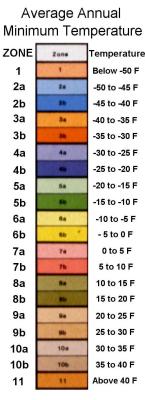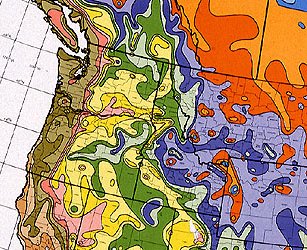
If you’re interested in gardening to any extent at all, you should really know what zone your garden is in. Having this number in mind will help you pick plants for your area that are going to survive over winter. Step number one for a frugal gardener is to stick to plants that will handle the weather where you’re live.
Please understand that there are some difficulties with this Zone idea, especially towards the west coast of the U.S. Due to the air coming in off the Pacific, and the multiple mountain ranges it has to cross, some areas of the west coast states are in the same zone, but experience totally different climates. So, the Zone map is a place to start, not the end all of your own gardens identity.
Once you have the Zone your gardens are classified as, you are better prepared to go to your local nurseries as well as participate in gardening forums on line Often when we as gardeners ask anyone for help, the first thing we hear is “What Zone are you in?”
Zones can tell a gardener all sorts of things including the amount of rainfall, average temperatures and the earliest and latest frost one can expect for your area. All this info adds up to which plants you can grow year round in your gardens if – and this is a big IF – all the other variables for that plant are met.
Plant Hardiness Northwest


Steph Coelho is a freelance writer gardening in zone 5b. She is a certified Square Foot Gardener and has taught various garden-related workshops. When she’s not digging in the dirt or writing, she’s cooking up fresh produce, running, or listening to her favorite podcasts.
Leave a Reply